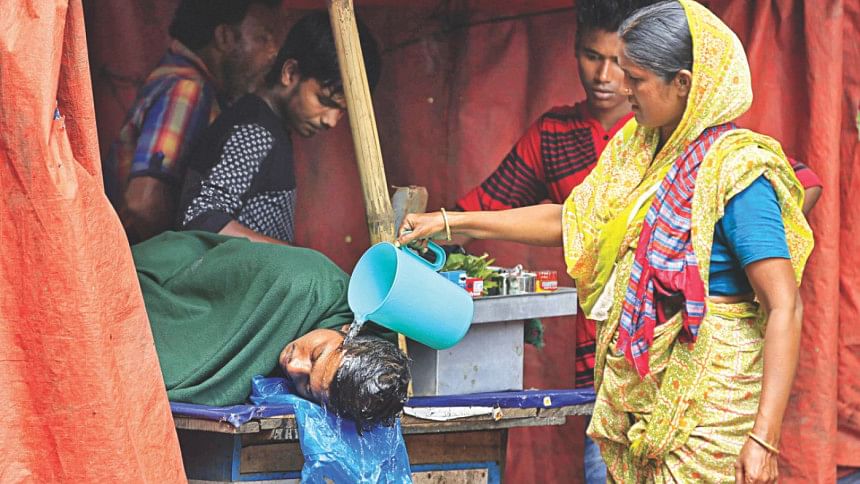Chikungunya onslaught on

Cases of chikungunya are on the rise in the capital.
The number of cases rose to 2,748 yesterday from 2,700 on Tuesday, said Prof Meerjady Sabrina Flora, a director at Institute of Epidemiology, Disease Control and Research (IEDCR).
Coordinated efforts by people, the government, and non-government agencies are needed to combat chikungunya in the capital, she said.
Torrential rain may help killing the aedis mosquito, but waterlogging will worsen the situation, Flora told The Daily Star.
The mosquito-borne disease is largely nonlethal but it may turn fatal if an ailing person is simultaneously found to have immunodeficiency, or carries another disease or infection, said a health expert.
Prof Flora said, “Dying from chikungunya is very rare.”
Symptoms of chikungunya are fever, muscle pain, headache, nausea, fatigue and rash. The disease often comes with a very debilitating joint pain which can last for days. Aedes aegypti mosquito is the carrier of both chikungunya and dengue viruses.
According to World Health Organisation (WHO), there is no cure for the disease. Treatment is focused on relieving the symptoms.
Meanwhile, Brac launched an awareness campaign to contain the disease as chikungunya continues to spread.
Based on recent experiences and available information, Brac has been disseminating information on the symptoms, preventive measures and treatment. It handed leaflets among its one lakh employees and their families, said a press release.
The leaflet is being distributed among students and their parents in 45,498 Brac schools across the country.
Social media sites are also being used to spread the message. The message reached thousands on Facebook, adds the release.
In addition to this, preventive measures are being strengthened in all Brac offices across the country. It also started collecting data on chikungunya infected patients.
According to epidemiologists, Bangladesh has been witnessing a rapid rise in the number of dengue cases in recent years. For example, the Directorate General of Health Services (DGHS) received reports of 3,162 dengue cases in 2015 and 6,020 last year.
Until May 14 this year, at least 194 dengue cases were reported alongside chikungunya, DGHS said.
Female Aedes mosquitoes breed all year round but require stagnant pools of clean water. Early and frequent rains this year and stagnant water on dug-up roads are the primary factors behind the spread of dengue and chikungunya, health experts said.
“We suspect that many people have developed immunity to dengue… some of them are being infected with chikungunya,” said Prof Saifullah of BSMMU.
Though many people come to the hospital with chikungunya symptoms, not all are diagnosed with the disease, he said.
“This may be because they show up two to three days after they have fever. Usually, it takes five days for the chikungunya virus to develop in the body and only then can it be successfully diagnosed,” Saifullah said.

 For all latest news, follow The Daily Star's Google News channel.
For all latest news, follow The Daily Star's Google News channel. 



Comments